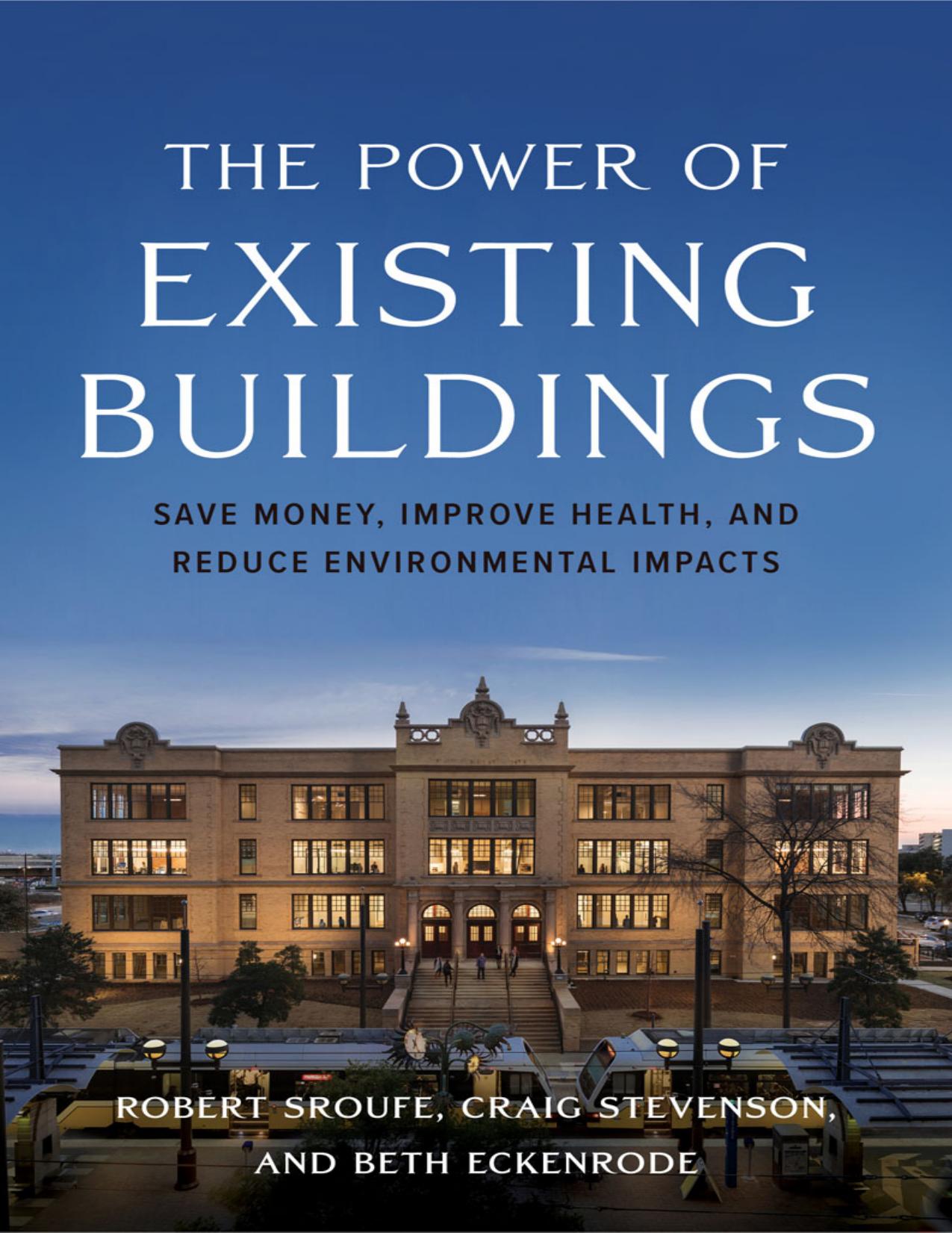The Power of Existing Buildings by Robert Sroufe Jr

Author:Robert Sroufe Jr
Language: eng
Format: epub, pdf
Publisher: Island Press
Published: 2019-02-15T16:00:00+00:00
Building-Performance Modeling
Now that architects have factored in all the options, they will provide a massing and orientation for the building that will include a high-performing envelope design. With that data, you are ready to move to the next critical piece of the high-performance puzzle, the whole-building performance model.
To construct a high-performing envelope, the project design team needs to understand the site conditions. The eight climate zones in the continental United States are all featured in high-performance building modeling, which must take into account humidity, wind, number of degree days, sun path, shade objects, solar availability, orientation, temperature, and specific site features. Other considerations are occupancy patterns, window placement in the envelope, shading devices, glazing characteristics, window-frame construction, continuous air barrier, weather barrier, thermal bridging, daylighting, lighting, HVAC equipment, domestic hot water, and other pieces of equipment. An experienced design team knows that each one of these factors needs to be considered in order to bring up a successful project.
An architect specializing in high-performance buildings and having Passive House experience may be able to model the project in-house. This has advantages as it relates to envelope design, but not many architects have the capabilities or experience to do this kind of modeling unassisted. If your design team does not have this capability, then it is essential to find an experienced Passive House practitioner to support this modeling work. Irrespective of who undertakes the modeling work, it is essential that the model and resulting reports be made fully available to the entire design team. Our philosophy is that the model is the property of the building owner and should be made available to all team members in order to enable design teams to see the implications of design decisions from a performance standpoint. For example, can we swap out some of that expensive under-slab insulation for more insulation on the roof in order to save money? Trade-offs are easily evaluated and integrated into the project to stay within the target budget.
The timing of the building-performance model in the design process is important to understand. If your team is starting the energy model at the end of schematic design, it may be too late to be of optimal value from a performance standpoint. A rough model should be started alongside the early conceptual design in order to understand design-decision impacts. Issues you might consider early in the process are envelope optimization, solar orientation, shading, size and orientation of windows, and building location on the site. As designers gain more experience with building-performance modeling, they begin to learn about the consequences of their decision-making and those lessons become incorporated into their growing body of knowledge and experience. The first project using Passive House building science can feel daunting, but after a project or two, the designer’s ability to predict outcomes improves with experience.
Download
The Power of Existing Buildings by Robert Sroufe Jr.pdf
This site does not store any files on its server. We only index and link to content provided by other sites. Please contact the content providers to delete copyright contents if any and email us, we'll remove relevant links or contents immediately.
The Body: A Guide for Occupants by Bill Bryson(4974)
Audition by Ryu Murakami(4850)
Adulting by Kelly Williams Brown(4487)
Housekeeping by Marilynne Robinson(4347)
Be in a Treehouse by Pete Nelson(3947)
Zero Waste Home by Bea Johnson(3777)
Seriously... I'm Kidding by Ellen DeGeneres(3577)
Better Homes and Gardens New Cookbook by Better Homes & Gardens(3525)
The Healing Self by Deepak Chopra(3474)
Barkskins by Annie Proulx(3313)
Hedgerow by John Wright(3275)
The Cellar by Natasha Preston(3260)
Spark Joy by Marie Kondo(3249)
The Genius of Japanese Carpentry by Azby Brown(3224)
The Life-Changing Magic Of Tidying Up- The Japanese Art Of Decluttering And Organizing (v5.0) by Marie Kondo(3211)
120 Days of Sodom by Marquis de Sade(3179)
Work Clean by Dan Charnas(3048)
The Book of Numbers by Peter Bentley(2912)
A Monk's Guide to a Clean House and Mind by Shoukei Matsumoto(2868)
